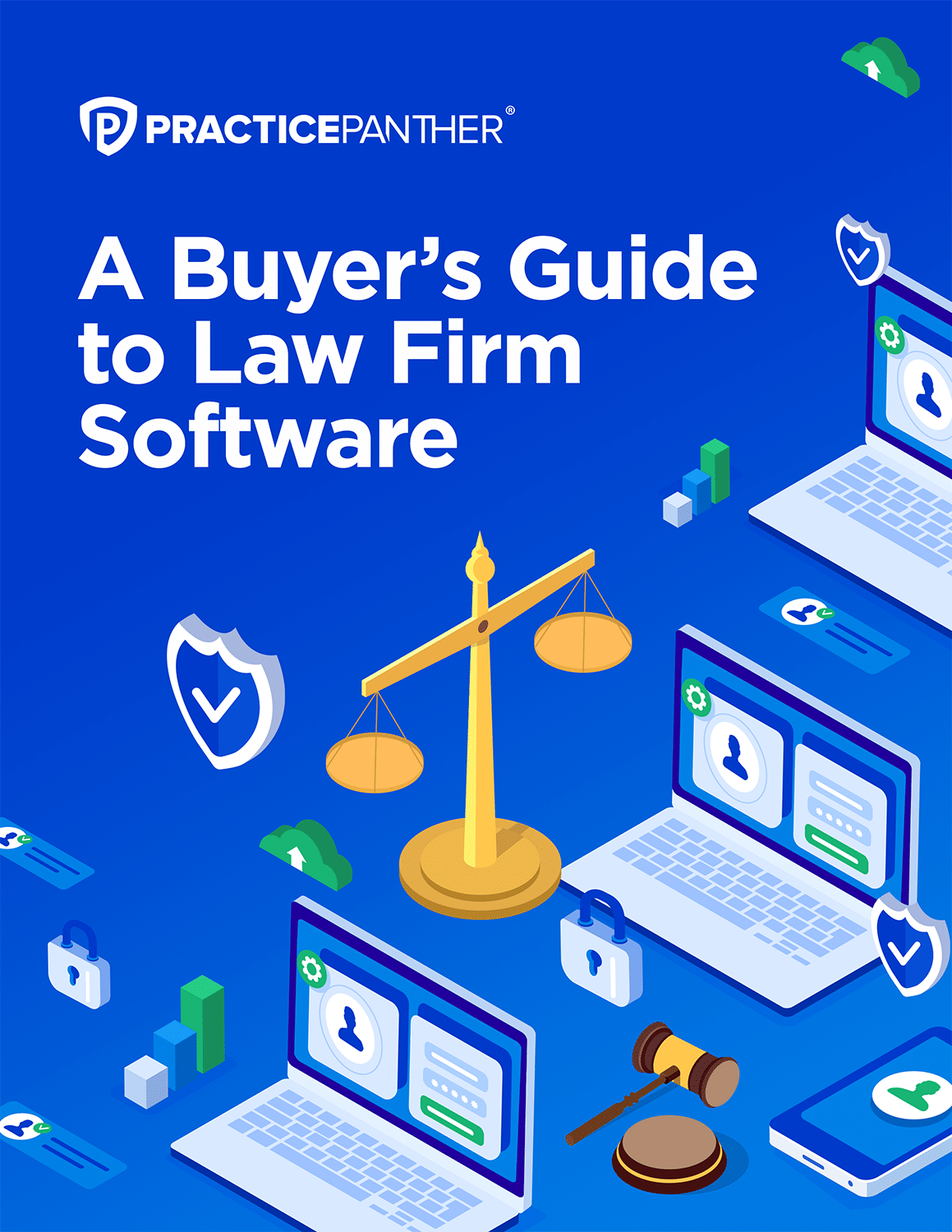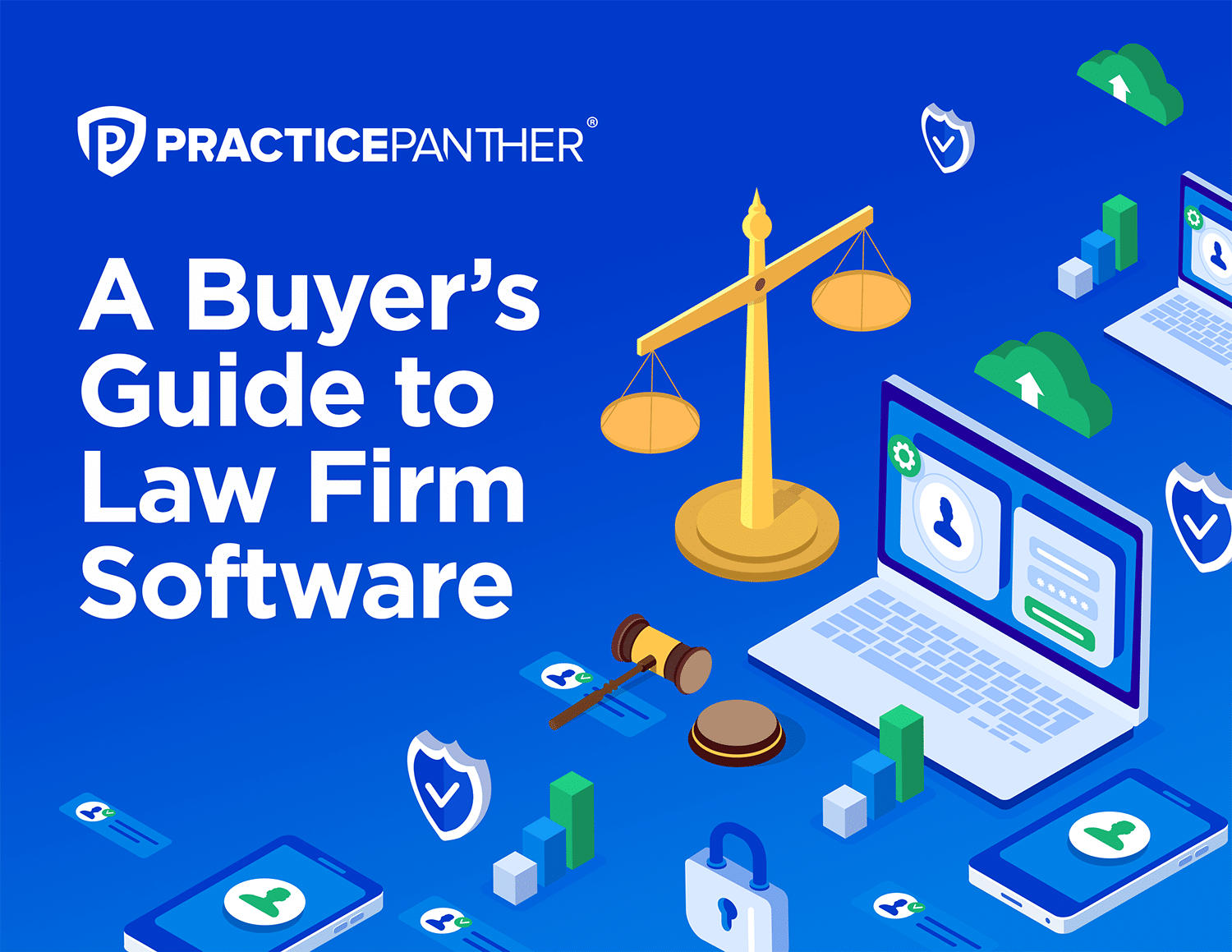Large and small law firms alike often have a lot of tasks to juggle. From administrative work to legal time tracking to client communication, it’s easy for important tasks to fall through the cracks. This can cause stress across staff and impact your firm’s productivity and quality of service to clients. Legal workflow automations are the best solution to managing the day-to-day tasks at your law firm. Automated workflows can improve the firm’s internal processes, save time, and improve client interactions.
What Is Legal Workflow Automation?
A legal workflow automation is a process of completing a series of tasks to complete a specific project from start to finish. Establishing clear, predetermined, and structured workflows is a simple way to organize the complex or repetitive processes at your law firm.
One example of a legal workflow is the process of briefing external counsel. This often starts at client intake and involves the law firm clearing potential conflicts before the client provides the detailed and reviewable brief. Once the client is cleared, there are several documents and other onboarding tasks to start working on the client’s case.
Benefits of Workflow Automation
When your firm has a high volume of cases it’s struggling to keep up with, it may be time to consider incorporating legal workflows to offset any repetitive processes. Not only will this alleviate your firm from mundane processes, but it will give structure to the day-to-day and enhance the overall productivity.
With an all-in-one law practice management solution, like PracticePanther, your firm will have the ability to create endless automated workflows and reap these benefits:
Relieves the Burden of Administrative Work
Law firms spend a lot of time and resources on administrative tasks related to a matter or case. According to a study, law firms waste more than 40% of the day on manual administrative processes. Automating these repetitive tasks in a workflow frees time for administrative staff to focus on more productive and profitable work.
Creates Consistency in Processes
Establishing standardized processes is necessary for a law firm to grow. Legal workflow automation helps you document your firm’s processes to ensure consistency across staff. If only one person knows the processes, that creates disruptions if that person leaves or is unavailable for a period of time.
Formal processes can be trained and implemented across the entire staff, as well as new hires, to create consistency throughout the law firm.
Improves Client Relationships
The client experience is composed of multiple touchpoints that intersect with the legal workflow. From the first interaction the client has with your firm’s website to the initial consultation to nurturing retention when the case is complete, clients have expectations for each touchpoint in the process.
An automated workflow connects every aspect of your firm’s client interactions, including client intake, case management, the conflict check process, document management, client communications, time tracking, and billing. These processes all integrate and flow to ensure that the client experience feels organized and seamless, ensuring a positive impression of your firm.
Minimizes Errors
No system can eliminate all errors, but legal workflow automation reduces the most common errors by creating a “single source of truth” for data. Document automation tools pull live data from matters and input them into preconfigured document templates with one click, eliminating redundant data entry that creates opportunities for mistakes.
Legal workflow automation software also helps staff identify where mistakes are likely to occur. Once you know where an error originated from, you can tweak your process to prevent it from happening in the future.
Enhances Collaboration
Staff members feel empowered when they have a clear understanding of how to perform their tasks effectively. Workflow management ensures that everyone on the team has a predetermined structure to follow and establishes clear roles and responsibilities for the process.
Instead of having multiple tools, emails, project boards, and chats, the entire staff can collaborate in one organized legal workflow system to understand the who, what, where, when, and how of their day-to-day responsibilities.
As more law firms transition to remote or hybrid work models, having a cloud-based law practice management software that enables staff to work from anywhere is essential to supporting collaboration and pushing work forward.
Improves Control and Transparency
Legal workflow management provides a clear understanding of processes and systems. Using automation software catalogs all tasks and provides control over the access to data for all staff members. The entire staff also has a clear understanding of roles and responsibilities.
What Is Legal Workflow Automation Software?
Legal workflow automation software is a technology that establishes a series of law firm tasks that can run automatically — free of manual intervention — to free time and reduce human error. This software should be customizable to the law firm.
When a law firm uses configurable law practice management software, the first step is to establish ideal processes for different matter types. These steps can be used to construct systematized, automated legal workflows for the software, ensuring that each matter type has a specific workflow to assist staff.
The workflow automates actions, tasks, and notifications for each matter, including document creation from existing templates, automated email updates, or notifications for staff to enter data at important milestones. You can customize workflows by specific practice areas that your firm serves with PracticePanther’s automated workflow feature.
PracticePanther makes this simple with its native automated workflows. Firms can construct as many workflows as needed within the same platform that they manage all other aspects of their practice.
Where to Use Legal Automation Software
Workflow can be used in any aspect of your firm that requires administrative work, but the most common and beneficial areas will focus on automating:
Client Intake and Onboarding
Most legal clients visit a law firm’s website to take action, such as calling the firm or submitting a form to schedule a case review or consultation. If your firm has a high volume of website form submissions, you will need a process to manage your pipeline.
Many firms get alerted of prospective client inquiries via contact forms on their website, but those forms don’t automatically input the information into case management software to start the intake process. Practice management software offers workflow tools to help you manage client intake, such as automating personalized response emails, merging new client agreement documents, and scheduling follow-up tasks.
Law practice management software like PracticePanther also offers tools like legal eSignature for quick and simple document signing. You and your clients can send and sign eSignature requests from any device, at any time, and from anywhere.
Billing and Invoice Processes
Workflow management can help the billing process in time tracking, billing, and collections to improve cash flow. With a resource like PracticePanther, time tracking is simple and quick. With custom reporting, you can identify events, tasks, emails, and calls that are unbilled, create settings around the matter and hourly rates, and capture more billable time.
Collections are another challenge for law firms. Staff has to manually send out reminders to clients to get the firm paid, but with workflows, you can set up reminders that are automatically sent to clients when a bill is overdue. The emails will be continually sent until the balance is paid, reducing outstanding accounts receivable.
Implement Legal Workflow Automation Software
Legal work can be complex, regardless of the law firm’s size. The systems that support the work should simplify the process. Workflow management with automated workflow software streamlines productivity and improves the quality of work produced in your law firm. These tools create consistency and improvements in matter progression and client relationships, helping your law firm to thrive.
*This blog was last updated on 11/1





